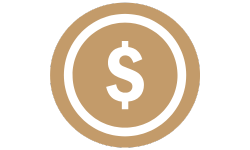Introduction
Taking control of your debt can feel like a huge task—but every financial journey begins with a single step. If you’re just starting to look at your finances and wondering where to begin, this guide is for you. We’ll walk you through how to assess your current debt situation, understand your options, and begin crafting a realistic plan to get out of debt. This isn’t just about paying bills—it’s about reclaiming your financial power.
Related: Let Us Help You Get Out of Debt: Proven Strategies to Regain Financial Freedom –
Step 1: List and Categorize Your Debts
The first step is clarity. Create a list of every debt you owe, including:
- Total balance
- Interest rate (APR)
- Minimum monthly payment
- Due date
- Lender information
Group your debts into categories like:
- Credit Cards
- Student Loans
- Auto Loans
- Personal Loans
- Medical Bills
This visual representation will help you see the full picture, spot high-interest liabilities, and start to prioritize your repayment strategy.
Tip: Use a spreadsheet or budgeting app like Undebt.it, or YNAB to keep things organized.
Step 2: Understand Interest and Terms
Knowing how interest works is crucial to choosing the right repayment plan.
- APR (Annual Percentage Rate) includes both the interest rate and any fees.
- Compound interest can increase your debt faster if you’re only making minimum payments.
Make sure you:
- Read your loan or credit card terms carefully
- Understand fixed vs. variable interest rates
- Take note of grace periods, penalties, and promotional offers (like 0% APR)
Understanding these terms will help you avoid traps that prolong your debt.
Step 3: Choose a Repayment Strategy
Once you know what you owe and how much it’s costing you, it’s time to make a plan. Two of the most popular methods are:
Snowball Method
Focus on paying off the smallest debt first while making minimum payments on others. As you eliminate each small debt, you gain momentum.
Pros:
- Quick wins help with motivation
- Simple to manage
Avalanche Method
Focus on the debt with the highest interest rate first to save money over time.
Pros:
- Saves more in interest long-term
- Great for analytical thinkers
Which is best? If you need fast motivation, go with snowball. If you want to save the most money, avalanche may be your best bet.
Step 4: Create a Budget That Supports Your Plan
A budget ensures your income is working in your favor. Start with a simple framework like the 50/30/20 rule:
- 50% for needs (housing, food, utilities)
- 30% for wants (dining, entertainment)
- 20% for savings and debt repayment
To prioritize debt:
- Reduce discretionary spending (e.g., subscriptions, eating out)
- Allocate any windfalls (bonuses, tax returns) toward your debt
- Set up automatic payments to avoid late fees
Tools: Try budgeting apps like EveryDollar or PocketGuard.
Step 5: Set Realistic Goals and Milestones
Instead of thinking about the total debt, break it into manageable pieces.
Examples:
- Pay off $500 in 3 months
- Pay off your smallest credit card in 6 months
- Become debt-free in 3 years
Celebrate each milestone to stay motivated. Reward yourself with something small (but budget-friendly), like a movie night or a day trip.
Tip: Use a visual tracker like a debt thermometer to see your progress.
Step 6: Stay Consistent and Motivated
Getting started is one thing—but staying consistent is where real results come from.
Here are a few ways to stay on track:
- Use calendar reminders or mobile alerts
- Automate your debt payments
- Get an accountability partner (spouse, friend, coach)
- Track your progress monthly and adjust when needed
- Avoid new debt unless absolutely necessary
Also, find free online communities (like Reddit’s r/personalfinance or Facebook debt-free groups) to share your wins and struggles.
Step 7: Plan for Unexpected Expenses
If you don’t have an emergency fund, start building one alongside your debt plan. Even $500–$1,000 can prevent you from relying on credit cards for emergencies.
Ideas to build your emergency fund fast:
- Sell unused items
- Use cashback apps
- Take on short-term side gigs
This cushion protects your progress and reduces financial stress.
Step 8: Increase Your Income if Needed
If your current income barely covers your expenses, consider ways to boost it:
- Freelancing (writing, design, tutoring)
- Gig apps (DoorDash, Instacart, Fiverr)
- Selling handmade or digital products
- Asking for a raise or switching jobs for better pay
Increasing your income gives you more flexibility and speeds up your debt payoff.
Final Thoughts
Debt can feel like a heavy burden, but taking the first step changes everything. By organizing your debts, choosing a payoff method, creating a supportive budget, and staying consistent, you’ll begin to build real financial freedom.
Remember, it doesn’t matter how much you owe—what matters is that you start. Progress may be slow at first, but each payment brings you closer to a debt-free life.
You got this.
Disclaimer: The content on this post is for informational and educational purposes only and should not be considered professional financial advice. Your path to a debt-free and financially secure future awaits!

